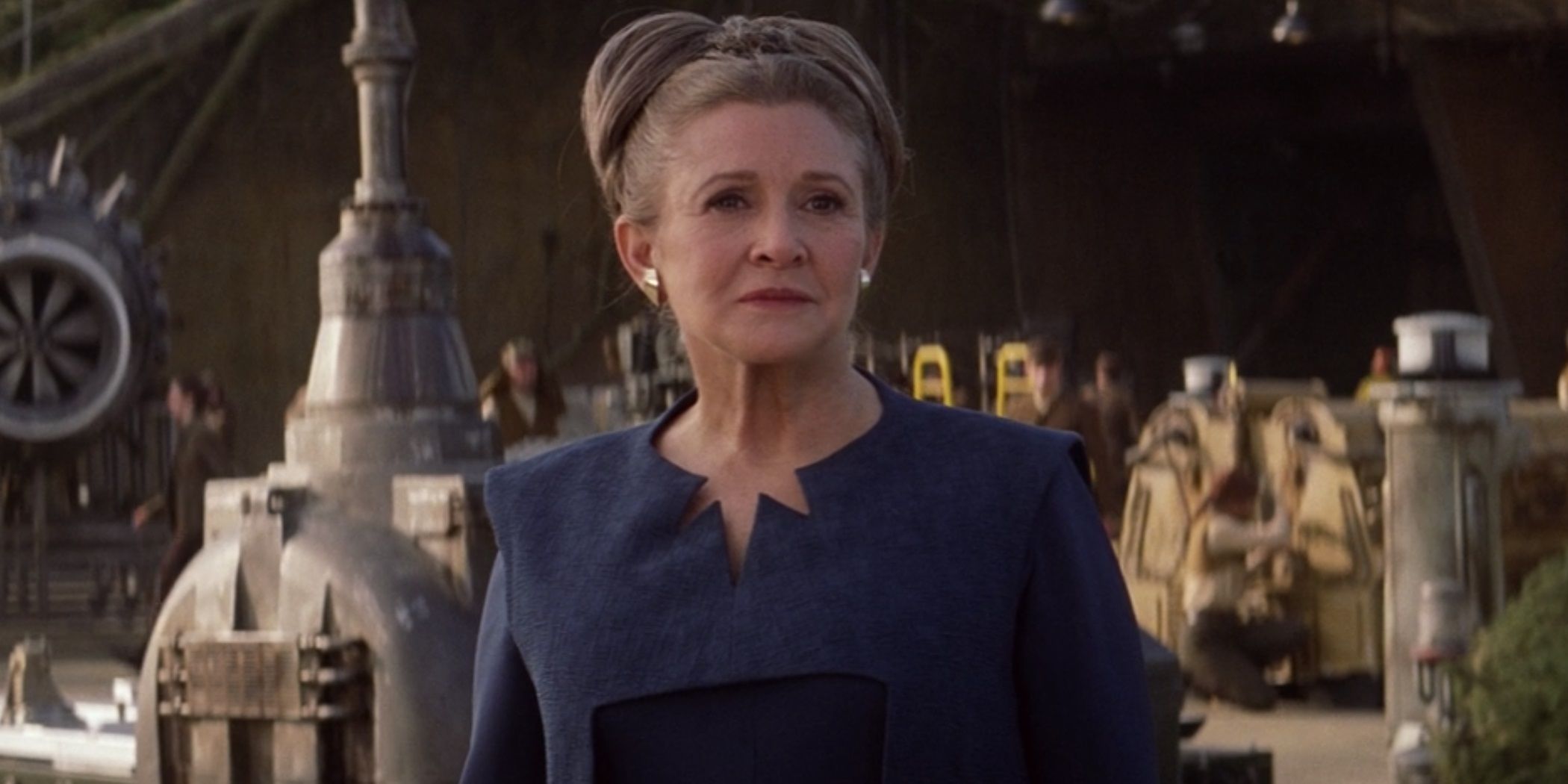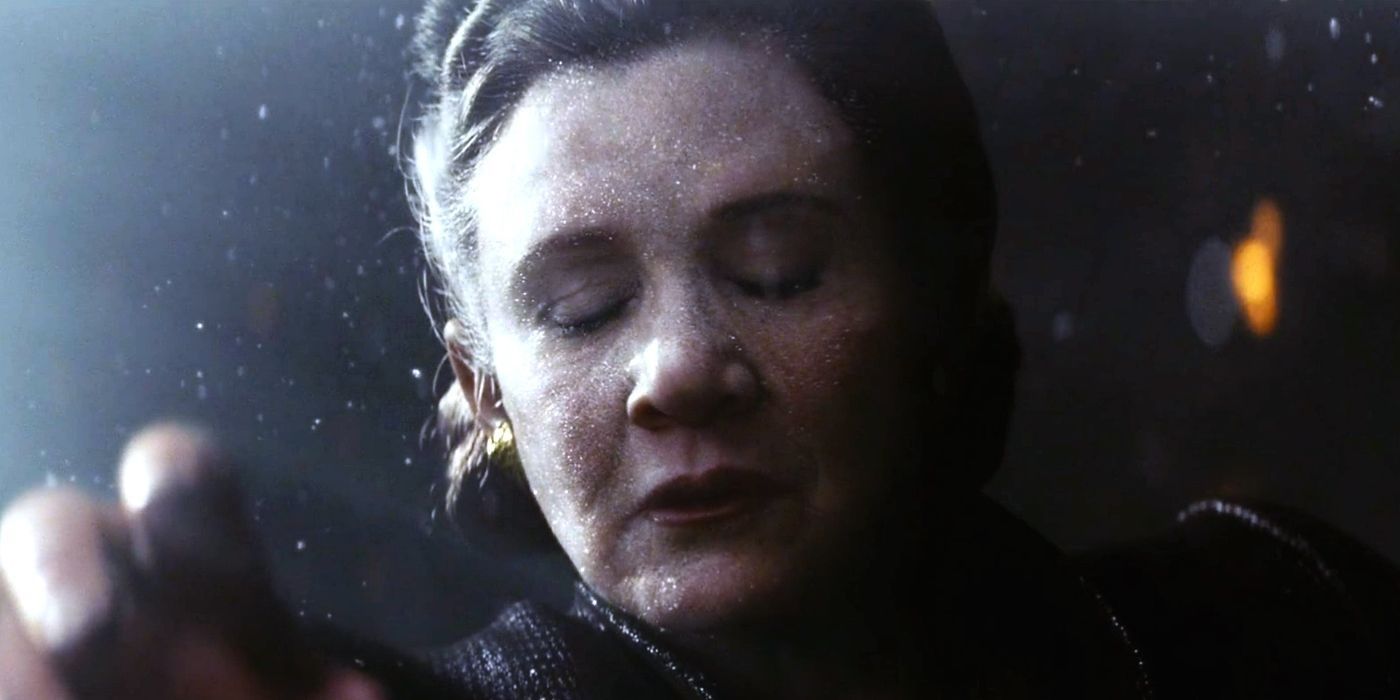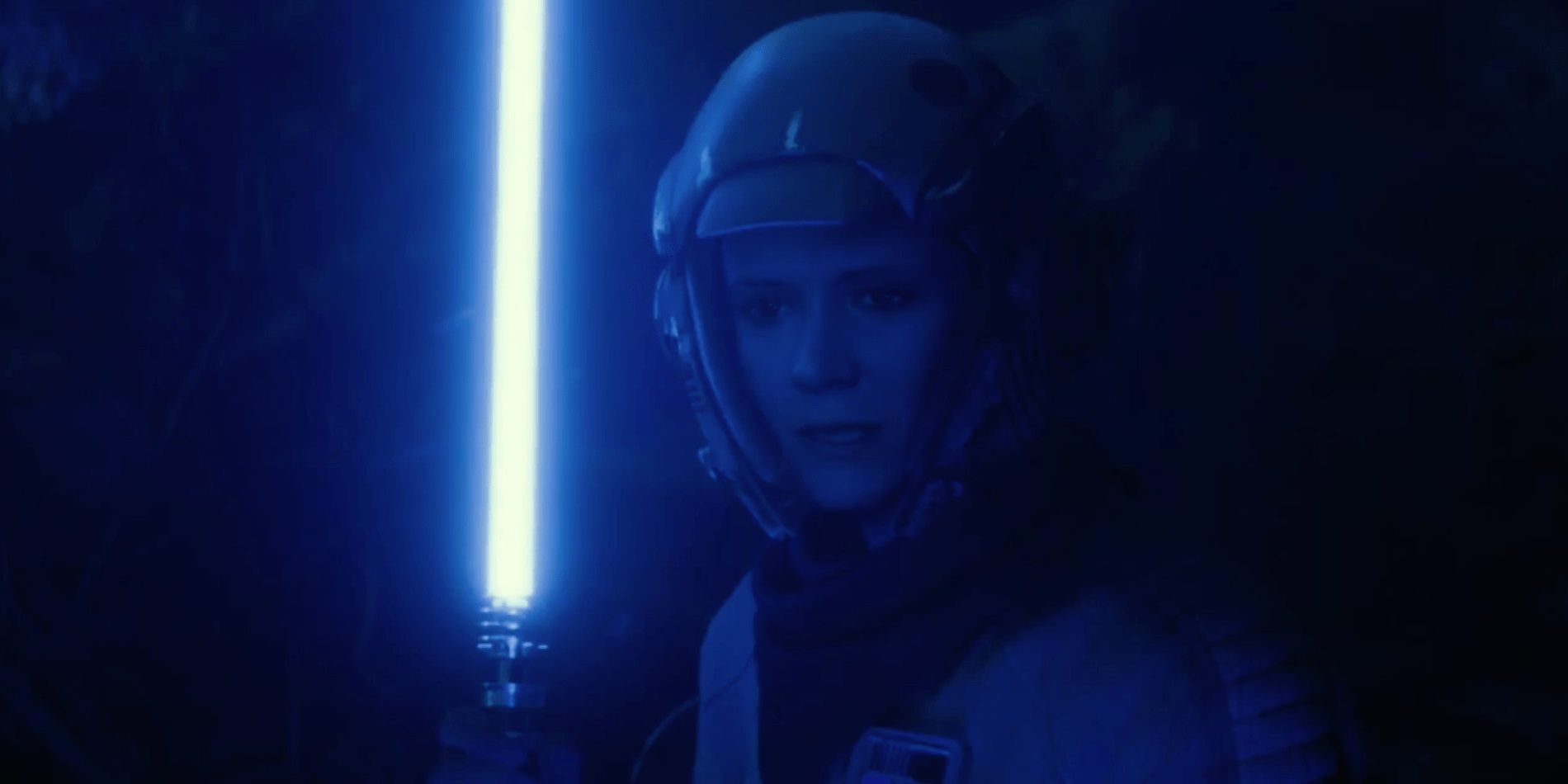When Luke Skywalker cuts his Jedi training on Dagobah short to help his friends on Bespin and possibly confront Vader, Obi-Wan’s Force ghost tells Yoda, “That boy is our last hope.” Illuminated by Luke’s departing X-wing, Yoda says, “No. There is another.” At the end of Star Wars: The Empire Strikes Back, as Luke is hopelessly clinging to the underside of Cloud City, he reaches out to Leia through the Force. She receives the message and takes the Falcon back to save him. In Return of the Jedi, it’s revealed that the “other” Jedi prodigy that Yoda mentioned is Leia, who’s actually Luke’s twin sister and the daughter of Darth Vader.
Although Leia didn’t actually become a Jedi in the original Star Wars trilogy, the writing was on the wall that becoming a Jedi was her destiny. Her Force sensitivity was established, so the stage was set for Leia to be a seasoned Jedi when Episode VII came around. But this setup was completely squandered in Disney’s sequel trilogy and Leia was relegated to the same role she had in the original movies to pander to fans’ nostalgia.
George Lucas’ original treatments for the sequel trilogy (the ones that Disney ignored in their entirety) revealed Leia to be the true “chosen one” prophesized in the ancient Jedi texts. The sequels suffered from the heartbreaking loss of the late, great Carrie Fisher in 2016, which limited her role in Episode IX to CGI replicas and outtakes from The Force Awakens, but the trilogy’s characterization of an older Leia was flawed from the outset. For the sake of nostalgia, The Force Awakens made Leia the leader of another struggling rebellion (and it made Luke a MacGuffin, but that’s a separate issue).
Although The Force Awakens was supposed to be a direct sequel to Return of the Jedi, it didn’t do much with its setups. Jedi ends before the New Republic has been established and The Force Awakens begins in a world ruled by the First Order that hasn’t enjoyed the stability of the fallen New Republic in years – it totally skipped a major step in the galaxy’s political history. Plus, Kylo Ren’s worship of Vader’s mask and promise to finish what he started completely ignored Anakin’s redemption at the end of Jedi. Leia’s Force sensitivity was just one of many original trilogy setups that Abrams disregarded for the sake of nostalgia.
Granted, Leia was more politically minded and her allegiance was to the Rebellion and not to the Jedi. She would’ve dedicated a large chunk of her post-Return of the Jedi life to rebuilding the Republic and bringing peace and order back to the galaxy. But without the Empire constantly trying to kill her, she’d have a lot more spare time. She could’ve fit in some Jedi training in addition to establishing a new world order.
After The Force Awakens ignored Leia’s Force sensitivity entirely (despite its title), The Last Jedi reintroduced that element of her characterization in the clunkiest, weirdest way possible. Leia’s ship is hit during a space battle and she’s yanked out into the vacuum of space, where she begins to freeze up and die. Then, out of nowhere, she suddenly starts flying through space like Superman and makes her way back on board the ship. There, she passes out and spends the rest of the battle in a hospital bed, waiting for it to end. Abrams ignored Leia’s Force powers, so Rian Johnson overcompensated with one big, ridiculous Leia Force moment that can only be described as Mary Poppins in space.
When Abrams came back to helm Episode IX, he had to somehow explain why Leia wasn’t a Jedi in Episode VII, but managed to fly through space in Episode VIII. As with almost everything else in The Rise of Skywalker, the movie didn’t quite stick the landing with this patchwork payoff. It was explained away with a brief flashback in which a young Leia (played convincingly by Fisher’s daughter Billie Lourd with a CG makeover) quits her Jedi training because she senses it will end with her son’s death. This personal sacrifice would be in character for Leia if it actually made sense, but if she could see the future (which Yoda said was impossible), then she would’ve seen that giving up her Jedi training would end with an even worse fate than her son dying. In The Rise of Skywalker, Leia’s son died twice.
After Yoda himself declared that Leia was a Force prodigy on par with Luke in The Empire Strikes Back, the sequel trilogy should’ve begun with both Skywalker twins leading the new Jedi Order. With 30 years of training under her belt, Leia would’ve been a legendary Jedi in a version of Episode VII that leaned into this angle.



